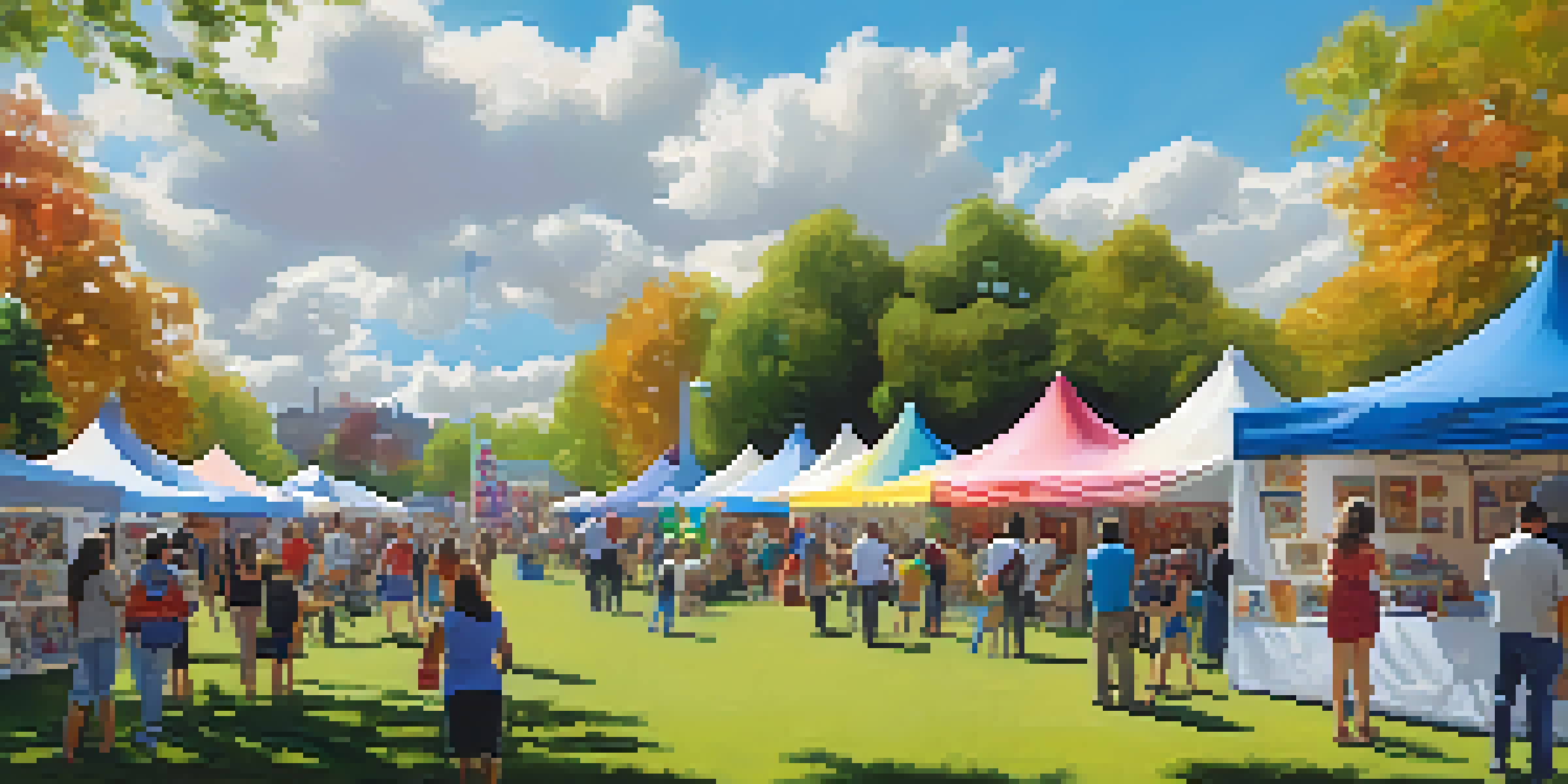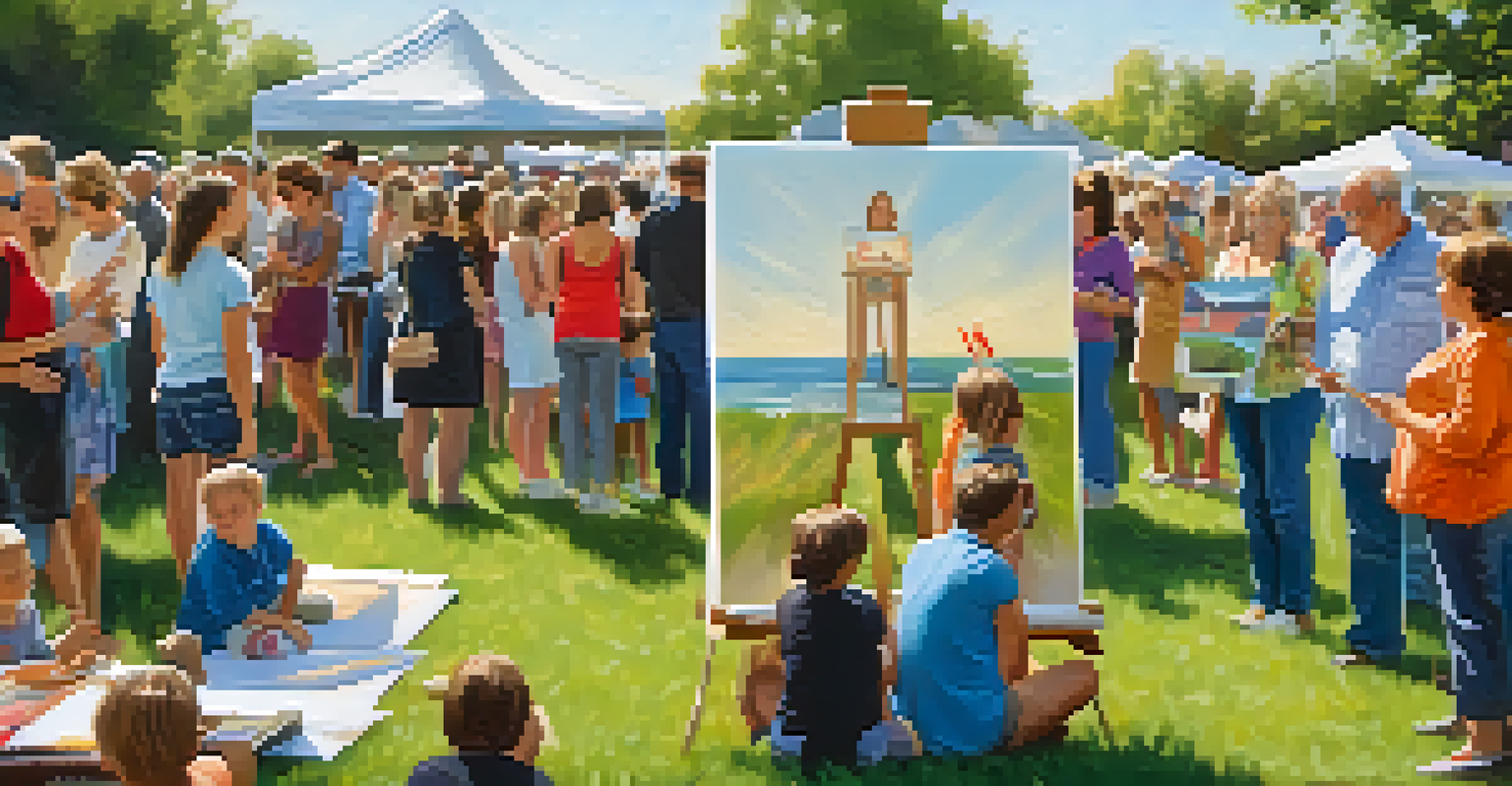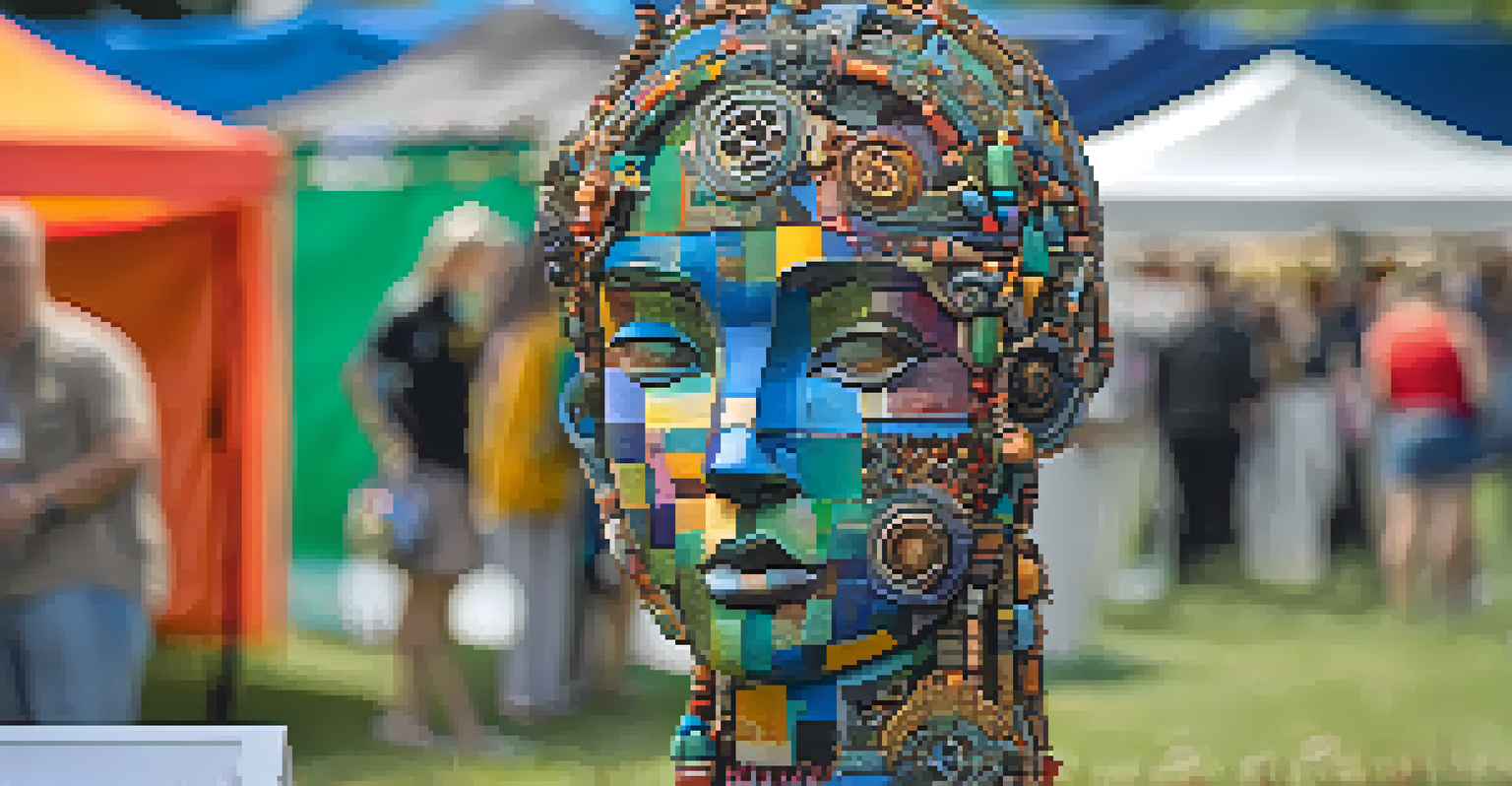Art Fairs in Suburbia: Challenging Cultural Stereotypes

Understanding the Role of Art Fairs in Suburban Communities
Art fairs have become vibrant hubs in suburban areas, showcasing local talent and creativity. They serve as platforms for artists who might otherwise go unnoticed, bringing art closer to home. By hosting these events, suburban communities can foster a sense of belonging and appreciation for the arts.
Art is not what you see, but what you make others see.
These fairs not only feature established artists but also newcomers, creating a diverse tapestry of artistic expression. From paintings to sculptures and digital art, visitors can engage with a variety of mediums that reflect the local culture. This diversity challenges the stereotype that art is only found in urban settings.
Moreover, art fairs help bridge gaps between different demographics, uniting people from various backgrounds. Families, young adults, and retirees come together to celebrate creativity, fostering conversations that enrich community ties. This communal spirit reinforces the idea that art knows no boundaries.
Breaking Down Cultural Stereotypes in Suburbia
Suburbia often faces misconceptions about its cultural vibrancy, with many viewing it as a cultural wasteland. However, art fairs highlight the rich, untapped artistic potential in these regions, challenging such stereotypes. They showcase that creativity flourishes even outside bustling city limits.

Through curated exhibits and interactive workshops, suburban art fairs provide an avenue for cultural exchange. Attendees can experience various artistic traditions and perspectives, allowing them to broaden their understanding of art and its significance. This exposure helps dismantle preconceived notions about what art should look like and where it should exist.
Art Fairs Boost Suburban Community
Art fairs foster local talent and creativity, bringing diverse artistic expressions and a sense of belonging to suburban areas.
As artists from diverse backgrounds participate, the narrative around suburban life begins to shift. The presence of multicultural art forms encourages appreciation and respect for different cultures, paving the way for a more inclusive community. This transformation fosters a sense of identity that is both unique and representative of the suburb as a whole.
The Economic Impact of Art Fairs on Suburban Areas
Art fairs also have significant economic implications for suburban communities. They attract visitors from neighboring regions, boosting local businesses such as cafes, shops, and hotels. This influx of visitors can invigorate the local economy, demonstrating that art can be a powerful economic driver.
Art has the power to transform, to illuminate, to educate, and to motivate.
Moreover, these events create opportunities for local artists to sell their work, providing them with much-needed financial support. By connecting artists with buyers, fairs not only promote individual creativity but also contribute to the sustainability of the local art scene. This economic vitality further challenges the stereotype that art is an elitist pursuit.
In addition, the increased visibility of local artists can lead to further investment in the arts. Community leaders may recognize the potential for art to enhance quality of life and invest in future cultural initiatives. This cycle of investment and engagement helps solidify the role of art in suburban life.
Community Engagement Through Art Fairs
One of the most beautiful aspects of art fairs is their ability to engage the community. They often include activities like hands-on workshops, artist talks, and panel discussions that invite participation from all ages. This engagement fosters a sense of ownership and pride in local culture.
Such interactions can inspire a new generation of artists and art lovers by making the creative process accessible. When children and adults alike have the opportunity to create, they develop a deeper appreciation for art. This engagement can lead to more robust support for the arts within the community.
Economic Growth Through Art Events
These events not only enhance local economies by attracting visitors but also provide financial support for local artists.
Additionally, art fairs often collaborate with local schools and organizations, further deepening their community ties. By involving students and educators, these fairs can provide educational opportunities that might not otherwise be available. Thus, they become a breeding ground for innovation and collaboration.
The Role of Technology in Modern Art Fairs
In today's digital age, technology plays a crucial role in how art fairs operate and reach their audiences. Virtual tours and online galleries have made art more accessible than ever, allowing people to experience these events from the comfort of their homes. This technological integration broadens the reach of suburban art fairs and attracts a more diverse audience.
Social media also amplifies the visibility of local artists and their work. Artists can showcase their creations online, gaining followers and potential buyers beyond their immediate community. This online presence can lead to opportunities that transcend geographical boundaries, empowering suburban artists in unprecedented ways.
Furthermore, technology facilitates interactive experiences at art fairs, such as augmented reality exhibits. These innovations attract tech-savvy attendees who might not typically engage with traditional art forms. As a result, art fairs can foster a dynamic dialogue between art and technology, enriching the overall experience.
Art Fairs as Platforms for Social Commentary
Art has always been a powerful medium for social commentary, and suburban art fairs are no exception. Many artists use their work to address pressing social issues, such as climate change, inequality, and mental health. By showcasing these themes, art fairs provide a platform for important conversations within the community.
These discussions not only raise awareness but also encourage community members to reflect on their own experiences and perspectives. When art resonates with personal stories, it can inspire action and advocacy. This transformative power of art helps reshape the narrative around suburban life.
Art as a Catalyst for Social Change
Suburban art fairs serve as platforms for social commentary, encouraging discussions around important issues and promoting inclusivity.
Moreover, the inclusive nature of these fairs allows marginalized voices to be heard. By promoting artists from diverse backgrounds and experiences, suburban art fairs challenge the status quo and push for a more equitable representation in the art world. This commitment to social justice reinforces the idea that art is a vehicle for change.
Looking Ahead: The Future of Art Fairs in Suburbia
As we look to the future, the role of art fairs in suburban settings is likely to expand and evolve. They are becoming essential parts of community identity, offering unique experiences that challenge cultural stereotypes. This trend will likely continue as more suburban areas embrace the arts.
With an increasing focus on inclusivity and diversity, future art fairs may prioritize underrepresented artists and themes, further enriching the cultural landscape. These events can become spaces for innovation, where new ideas and collaborations flourish, shaping the artistic narrative of suburbia.

Ultimately, the growth of art fairs in suburban areas signals a shift in how we view art and culture. By embracing creativity outside urban centers, we can redefine what it means to be a culturally rich community. Art fairs may just be the beginning of a larger cultural renaissance in suburbia.